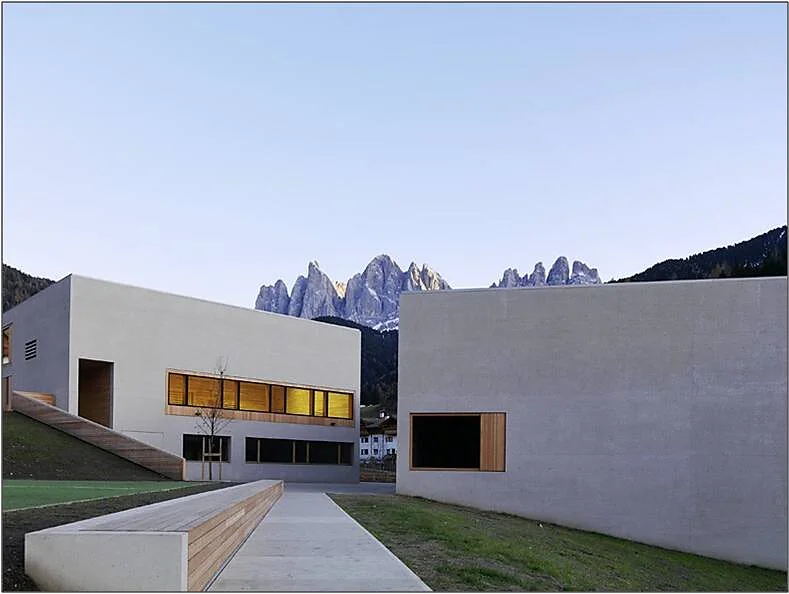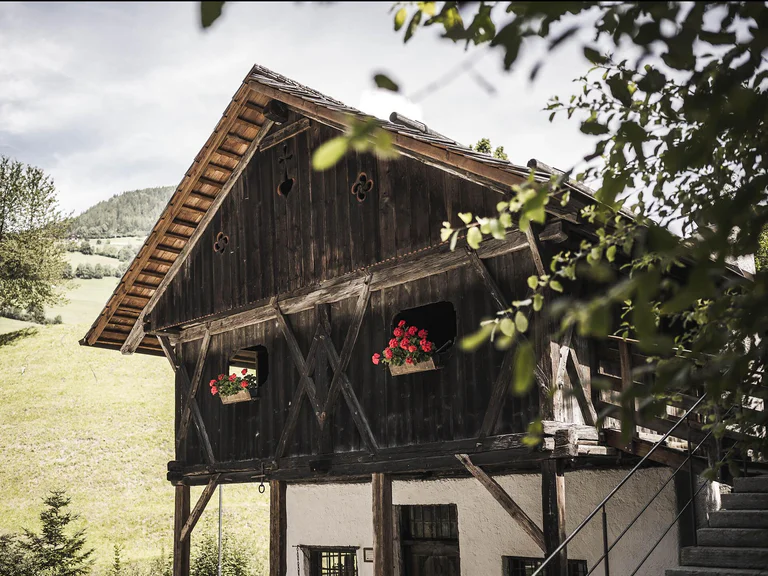The architects' aim with the primary school building in San Pietro/St. Peter in Funes/Villnöss was to start a new dialogue with the village. The building complex consists of several interconnected building parts of different heights, which are arranged in a kind of semicircle around an inner courtyard. The buildings encase and protect the inner courtyard, which is used by the children as a playground and rest area. The structural details of this project are child-friendly and simple in design: the school borders directly on the surrounding meadows, the walls of the building are plastered white, and the windows and doors on the fronts have different sizes and shapes. The surrounding landscape "infiltrates" into the interior of the school and is reinforced by the alignment and opening of the windows.















































































